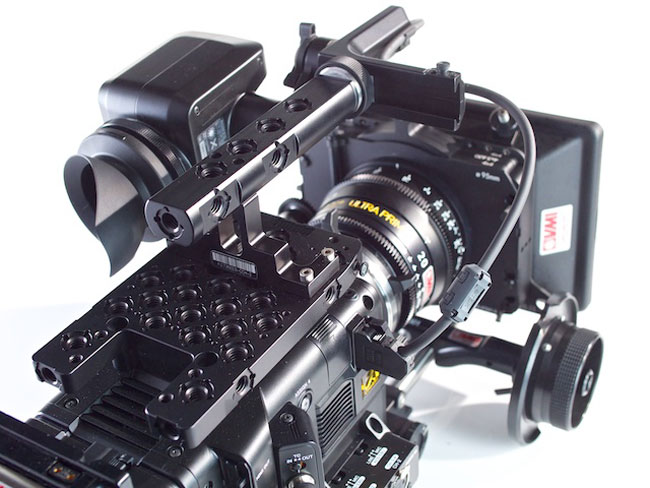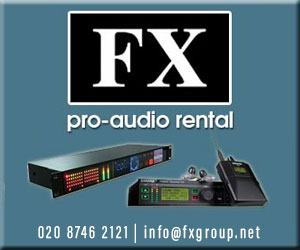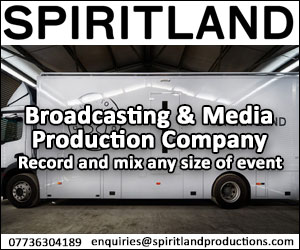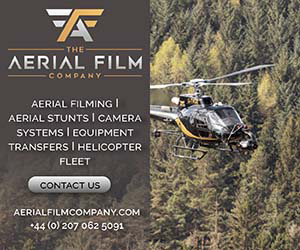Broadcast News
12/01/2016
Sony F5 Vs FS7. Which Is Better?

This is a short article to explore the merits of Sony PMW-F5 and Sony FS-7 for modern production. By VMI.
Over the last few years it seems that Sony introduce new cameras with alarming rapidity and whilst some products are new versions of previous models, the push for large sensor and 4K capability has led to some confusion amongst end users as to which system to use. The professional F range cameras began with the frankly redundant F65 and continued with the simultaneous release of the F55 and F5 which offered on board 4K recording with the Sony AXS-R5 External 4K Recorder module. Both these cameras have been subject to a long process of firmware upgrades that improve high speed and robust high quality codecs to the point now where the F5 is virtually identical to the F55 apart from the physical make-up of the low-pass filter and the fact that the F55 has a global shutter which can reduce the bending of verticals during very fast panning.
The FS range of more prosumer cameras began with the FS700 which was stunningly inept in the design department but had a very useful high speed function and so proved to be very popular despite having a tight AVCHD codec.
The FS7 was introduced early in 2015 and offers 4K recording again using a dedicated dockable module. The FS7 is essentially an up-scaled prosumer product and the F5 a stripped down professional camera so it is easy to understand the confusion over which is more suitable. This article will cover the main differences between the two-both are very capable machines so it is not our position to champion one over the other but merely to help inform your decision.
Whilst both cameras have aluminium chassis, the F5 base lens mount is the professional spec 'A' mount which offers a large locking surface area which secures the PL adapter mount very securely and also the 'A' to 'EF' mount for Canon lenses has an electronic interface to control the lens. The FS7 is based on the 'E' mount system (like the A7s) which shares the versatility of the F5 in terms of the variety of lens mounts that can be used but it is certainly a little more flimsy and could impact on certain types of project.
Our experience would suggest that the F5 is more reliable mechanically.
The robustness of the F5 'A' mount is an advantage when using PL lenses as it is less prone to shifting back focus during harsh environments or fluctuating temperatures and helps to maintain solid lens scaling. Equally, using remote focus systems that run a calibration set-up, the 'A' mount will remain firm and not allow the motors to 'flex' or pop over the lens gearing. If you are going to be using Canon USM zooms or primes then this much less of an issue as the lenses don't scale anyway. All VMI cameras are supplied with solid ARRI base plate accessories so there is no issue between the cameras in terms of rigidity and strength to support matte boxes and follow focus devices.
Social media allows for everyone to share their opinions and marketing and sales departments are constantly trying to foreground the benefits and refinements of prosumer cameras, particularly currently autofocus and control interfaces with electronic lenses. The FS7 can be rented with its 'own' 28-135mm/F4 power zoom lens which ticks those marketing boxes and on the face of it offers a good range for a 35mm sensor covering zoom, however there is over a two stop loss over the zoom range and the quality of the optics is basic which does rather beg the question whether you would be shooting in 4K if using this lens. The perception is that the FS7 is a more budget orientated product than the F5 and whilst that is true at point of purchase, from a rental perspective if you were wishing to shoot 4K or ProRes 4:2:2 with the FS7, then it would actually be slightly cheaper to hire the F5 from VMI with its internal 4K recording capability.
Please note that the 4K onboard record capability is ONLY available from VMI whose camera fleet have all had the 4K upgrade completed.
The current trends for gimbal and drone devices to add value and the 'wow' factor to a project can and should influence the decision about which camera to use. The F5 has an LDS/Cooke I interface which is helpful in remote set up situations and allows for the use of high quality 4K capable PL lenses with internal focusing elements.
Along with the 'A' mount to PL adapter which is very short and therefore facilitates easy balancing when using on a gimbal device. Again the perception of value for money would send folk down the FS7 and Canon USM zooms scenario and whilst this is more than adequate for most situations, there are two distinct drawbacks that need to be considered. The first is not camera specific but has to do with the way cheaper lenses zoom and focus-most stills derived lenses have zoom elements that travel along the chassis of the lens to vary the focal length, thus causing a shift in the weight distribution and unbalancing the rig and potentially adding to the prep/shoot time.
The other issue relates more to the FS7 which is an 'E' Mount camera and therefore the size of the 'E' to PL or EF adapters increases the length of the overall package and can cause balancing issues or even just not being able to fit the camera onto the rig if the 4K back module is needed to be used.
The F5 uses the tried and tested metal SxS card system which is now discontinued by Sony, but has proved to be solid and reliable since it was introduced with the EX1 about eight years ago.
The FS7 uses a new Sony media called XQD which has the built-in headroom for internal 4K recording and greater capacity. However the prosumer price point of the cards (in order to keep the costs down for owner operators) inevitably will be reflected in the build quality and components used and we are already logging some repairs on these cards even though they are not yet a year old.
Codec wise, the F5 with its rolling program of firmware upgrades now means that it can record XAVC 4K to the internal SXS cards without the need for the ASX-R5 recorder (which is still needed for 4K 16 bit Sony Raw). However using the recorder offers a great advantage over may raw recording systems as the 512GB AXSM cards allow for approx. one hour of continuous shooting, whereas the popular third party Odyssey recorder can record the raw feed but a 512GB card at 12 bit raw would only allow for twenty-four minutes recording. The recorder is dockable and controlled from the camera menu so no need to remember two menu systems. The FS7 also has a dockable back in order to perform certain recording functions (Prores 4:2:2) and can also use the AXS-R5 recorder for 4K raw recording, but it means you have to have the XDCA adapter back and then fit therecorder onto that which creates a considerably larger footprint for the camera.
The advantage of the AXS-R5 recorder is enhanced more when we consider that high speed footage can be written to one drive not two like most third party recorders and therefore ingest into an NLE is stress-free.
The last main area of difference is in the viewfinder arrangements and again reflects the price points and quality of materials between the two cameras. VMI supply the F5 with the highest quality Sony OLED viewfinder available, which is normally only partnered with the more expensive F55. The FS7 has an LCD screen which is partnered with a plastic clip on ocular viewfinder. This is of course a frustrating and irritating both in terms of use and also in the increased risk of damage as it will be removed and re-fixed constantly.
In conclusion, both cameras are capable of high quality 4k recording and have the ability to be partnered with £50,000 or £500 lenses depending on your budget and if you require your lenses to resolve 4Ks worth of optical imaging. Both share the same idiosyncratic Sony menu structure so again if you are familiar with that then there are no surprises here. The problem with the F5 is one of perception-both in terms of cost and abilities. Whilst it is certainly true that releasing a camera and then producing rolling firmware updates over a course of a couple years is not a sensible route to mass market sales, the F5 is now a capable, professional large sensor camera and its retail cost is not reflected in the hire cost. The FS7 is the new kid on the block (although there is now also an FS5-see first paragraph!) and therefore popular but because it is cheaper to buy and therefore perceived as cheaper to rent this does rather mask some of its (mainly physical) shortcomings and begs the question is it merely cheaper or is it value for money?
As we stated earlier, the rental costs for the two cameras are broadly the same if the FS7 requires the XDCA back for ProRes time code or monitoring so your choice should be based on the quality of the glass you require and the nature of the project you are undertaking and we think you'll be surprised at the number of times the F5 will tick those boxes for you when you apply the criteria in this article.
Article by Gerard Botha and Ian Jackson. Credit VMI. December 2015.
www.vmi.tv
Over the last few years it seems that Sony introduce new cameras with alarming rapidity and whilst some products are new versions of previous models, the push for large sensor and 4K capability has led to some confusion amongst end users as to which system to use. The professional F range cameras began with the frankly redundant F65 and continued with the simultaneous release of the F55 and F5 which offered on board 4K recording with the Sony AXS-R5 External 4K Recorder module. Both these cameras have been subject to a long process of firmware upgrades that improve high speed and robust high quality codecs to the point now where the F5 is virtually identical to the F55 apart from the physical make-up of the low-pass filter and the fact that the F55 has a global shutter which can reduce the bending of verticals during very fast panning.
The FS range of more prosumer cameras began with the FS700 which was stunningly inept in the design department but had a very useful high speed function and so proved to be very popular despite having a tight AVCHD codec.
The FS7 was introduced early in 2015 and offers 4K recording again using a dedicated dockable module. The FS7 is essentially an up-scaled prosumer product and the F5 a stripped down professional camera so it is easy to understand the confusion over which is more suitable. This article will cover the main differences between the two-both are very capable machines so it is not our position to champion one over the other but merely to help inform your decision.
Whilst both cameras have aluminium chassis, the F5 base lens mount is the professional spec 'A' mount which offers a large locking surface area which secures the PL adapter mount very securely and also the 'A' to 'EF' mount for Canon lenses has an electronic interface to control the lens. The FS7 is based on the 'E' mount system (like the A7s) which shares the versatility of the F5 in terms of the variety of lens mounts that can be used but it is certainly a little more flimsy and could impact on certain types of project.
Our experience would suggest that the F5 is more reliable mechanically.
The robustness of the F5 'A' mount is an advantage when using PL lenses as it is less prone to shifting back focus during harsh environments or fluctuating temperatures and helps to maintain solid lens scaling. Equally, using remote focus systems that run a calibration set-up, the 'A' mount will remain firm and not allow the motors to 'flex' or pop over the lens gearing. If you are going to be using Canon USM zooms or primes then this much less of an issue as the lenses don't scale anyway. All VMI cameras are supplied with solid ARRI base plate accessories so there is no issue between the cameras in terms of rigidity and strength to support matte boxes and follow focus devices.
Social media allows for everyone to share their opinions and marketing and sales departments are constantly trying to foreground the benefits and refinements of prosumer cameras, particularly currently autofocus and control interfaces with electronic lenses. The FS7 can be rented with its 'own' 28-135mm/F4 power zoom lens which ticks those marketing boxes and on the face of it offers a good range for a 35mm sensor covering zoom, however there is over a two stop loss over the zoom range and the quality of the optics is basic which does rather beg the question whether you would be shooting in 4K if using this lens. The perception is that the FS7 is a more budget orientated product than the F5 and whilst that is true at point of purchase, from a rental perspective if you were wishing to shoot 4K or ProRes 4:2:2 with the FS7, then it would actually be slightly cheaper to hire the F5 from VMI with its internal 4K recording capability.
Please note that the 4K onboard record capability is ONLY available from VMI whose camera fleet have all had the 4K upgrade completed.
The current trends for gimbal and drone devices to add value and the 'wow' factor to a project can and should influence the decision about which camera to use. The F5 has an LDS/Cooke I interface which is helpful in remote set up situations and allows for the use of high quality 4K capable PL lenses with internal focusing elements.
Along with the 'A' mount to PL adapter which is very short and therefore facilitates easy balancing when using on a gimbal device. Again the perception of value for money would send folk down the FS7 and Canon USM zooms scenario and whilst this is more than adequate for most situations, there are two distinct drawbacks that need to be considered. The first is not camera specific but has to do with the way cheaper lenses zoom and focus-most stills derived lenses have zoom elements that travel along the chassis of the lens to vary the focal length, thus causing a shift in the weight distribution and unbalancing the rig and potentially adding to the prep/shoot time.
The other issue relates more to the FS7 which is an 'E' Mount camera and therefore the size of the 'E' to PL or EF adapters increases the length of the overall package and can cause balancing issues or even just not being able to fit the camera onto the rig if the 4K back module is needed to be used.
The F5 uses the tried and tested metal SxS card system which is now discontinued by Sony, but has proved to be solid and reliable since it was introduced with the EX1 about eight years ago.
The FS7 uses a new Sony media called XQD which has the built-in headroom for internal 4K recording and greater capacity. However the prosumer price point of the cards (in order to keep the costs down for owner operators) inevitably will be reflected in the build quality and components used and we are already logging some repairs on these cards even though they are not yet a year old.
Codec wise, the F5 with its rolling program of firmware upgrades now means that it can record XAVC 4K to the internal SXS cards without the need for the ASX-R5 recorder (which is still needed for 4K 16 bit Sony Raw). However using the recorder offers a great advantage over may raw recording systems as the 512GB AXSM cards allow for approx. one hour of continuous shooting, whereas the popular third party Odyssey recorder can record the raw feed but a 512GB card at 12 bit raw would only allow for twenty-four minutes recording. The recorder is dockable and controlled from the camera menu so no need to remember two menu systems. The FS7 also has a dockable back in order to perform certain recording functions (Prores 4:2:2) and can also use the AXS-R5 recorder for 4K raw recording, but it means you have to have the XDCA adapter back and then fit the
The advantage of the AXS-R5 recorder is enhanced more when we consider that high speed footage can be written to one drive not two like most third party recorders and therefore ingest into an NLE is stress-free.
The last main area of difference is in the viewfinder arrangements and again reflects the price points and quality of materials between the two cameras. VMI supply the F5 with the highest quality Sony OLED viewfinder available, which is normally only partnered with the more expensive F55. The FS7 has an LCD screen which is partnered with a plastic clip on ocular viewfinder. This is of course a frustrating and irritating both in terms of use and also in the increased risk of damage as it will be removed and re-fixed constantly.
In conclusion, both cameras are capable of high quality 4k recording and have the ability to be partnered with £50,000 or £500 lenses depending on your budget and if you require your lenses to resolve 4Ks worth of optical imaging. Both share the same idiosyncratic Sony menu structure so again if you are familiar with that then there are no surprises here. The problem with the F5 is one of perception-both in terms of cost and abilities. Whilst it is certainly true that releasing a camera and then producing rolling firmware updates over a course of a couple years is not a sensible route to mass market sales, the F5 is now a capable, professional large sensor camera and its retail cost is not reflected in the hire cost. The FS7 is the new kid on the block (although there is now also an FS5-see first paragraph!) and therefore popular but because it is cheaper to buy and therefore perceived as cheaper to rent this does rather mask some of its (mainly physical) shortcomings and begs the question is it merely cheaper or is it value for money?
As we stated earlier, the rental costs for the two cameras are broadly the same if the FS7 requires the XDCA back for ProRes time code or monitoring so your choice should be based on the quality of the glass you require and the nature of the project you are undertaking and we think you'll be surprised at the number of times the F5 will tick those boxes for you when you apply the criteria in this article.
Article by Gerard Botha and Ian Jackson. Credit VMI. December 2015.
www.vmi.tv
More Broadcast Cameras and Camera Equipment Stories
21/06/2019
ARRI Unveils New ALEXA Mini LF Camera
ARRI has unveiled its new ALEXA Mini LF camera. Combining the compact size and low weight of the popular ALEXA Mini with the large-format ALEXA LF sen
ARRI Unveils New ALEXA Mini LF Camera
ARRI has unveiled its new ALEXA Mini LF camera. Combining the compact size and low weight of the popular ALEXA Mini with the large-format ALEXA LF sen
18/06/2019
Sony's 4K HDR Professional Camcorders To Receive Additional Workflow Flexibility
Sony has announced that its palm-sized 4K HDR professional camcorders, HXR-NX80 and PXW-Z90, will receive additional workflow flexibility via a free f
Sony's 4K HDR Professional Camcorders To Receive Additional Workflow Flexibility
Sony has announced that its palm-sized 4K HDR professional camcorders, HXR-NX80 and PXW-Z90, will receive additional workflow flexibility via a free f
29/03/2019
Vinten Unveils Two Additions To Its Range Of Robotic Solutions
Vinten has unveiled two additions to its range of robotic solutions for broadcast studios. These include a new virtual reality/augmented reality (VR/A
Vinten Unveils Two Additions To Its Range Of Robotic Solutions
Vinten has unveiled two additions to its range of robotic solutions for broadcast studios. These include a new virtual reality/augmented reality (VR/A
26/03/2019
Disney Benefits From Cooke Optics' Anamorphic/i Lenses
Two VFX-heavy commercial spots for Disney highlighting the latest Star Wars toys and merchandise benefited from Cooke Optics' Anamorphic/i prime lense
Disney Benefits From Cooke Optics' Anamorphic/i Lenses
Two VFX-heavy commercial spots for Disney highlighting the latest Star Wars toys and merchandise benefited from Cooke Optics' Anamorphic/i prime lense
09/04/2018
Sony FS5 II Now Supports Apple ProRes RAW
Atomos has announced that the Sony FS5 II with the Shogun Inferno 7" HDR monitor/recorder now supports Apple ProRes RAW. There are now nine ProRes com
Sony FS5 II Now Supports Apple ProRes RAW
Atomos has announced that the Sony FS5 II with the Shogun Inferno 7" HDR monitor/recorder now supports Apple ProRes RAW. There are now nine ProRes com
05/04/2018
A Filmmaker's Guide To Sensor Sizes And Lens Formats
As a cinematographer who owns lenses designed for various formats, I am often asked "will this lens work with my camera?" or, "will this lens cover 8K
A Filmmaker's Guide To Sensor Sizes And Lens Formats
As a cinematographer who owns lenses designed for various formats, I am often asked "will this lens work with my camera?" or, "will this lens cover 8K
12/03/2018
Cooke Optics Reveals New Focal Lengths
The next focal lengths have been announced by Cooke Optics for its latest lens ranges. The S7/i purpose-built full frame lens range is to include a 16
Cooke Optics Reveals New Focal Lengths
The next focal lengths have been announced by Cooke Optics for its latest lens ranges. The S7/i purpose-built full frame lens range is to include a 16
12/03/2018
Sony Ships VENICE Full-Frame Motion Picture Camera System
Sony's much-anticipated VENICE – its next-generation CineAlta motion picture camera – has commenced shipping to customers. As previously
Sony Ships VENICE Full-Frame Motion Picture Camera System
Sony's much-anticipated VENICE – its next-generation CineAlta motion picture camera – has commenced shipping to customers. As previously
15/02/2018
Anamorphic Lens Choices For 2018
The popularity of shooting with Anamorphic lenses has seen increased interest. This has expressed itself not only in the demand for established produc
Anamorphic Lens Choices For 2018
The popularity of shooting with Anamorphic lenses has seen increased interest. This has expressed itself not only in the demand for established produc
14/02/2018
Historical Vignettes Lensed with Cooke S4/i Primes
For the historical vignettes in the upcoming CNN six-hour, six-part miniseries Pope: The Most Powerful Man in History, Dane Lawing, SOC wanted each er
Historical Vignettes Lensed with Cooke S4/i Primes
For the historical vignettes in the upcoming CNN six-hour, six-part miniseries Pope: The Most Powerful Man in History, Dane Lawing, SOC wanted each er















